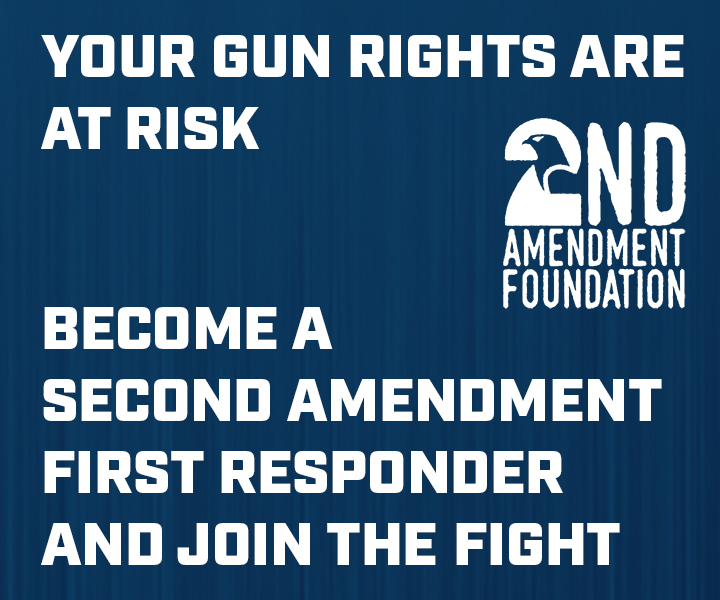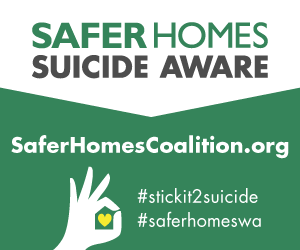
By Tanya Metaksa
What’s New—SCOTUS: The Garland v. VanDerStok decision and the reaction of Second Amendment supporters; Snope v. Brown and Ocean State Tactical v. Rhode Island, relisted for April 4; Antoyuk v. James, listed for April 4 conference; Worth v. Jacobson: Case # 23-2248: possible appeal to SCOTUS; Sauer nomination to be Solicitor General: awaiting Senate vote; Christian v. James: Case No: 22-2987: The Christian v. James case from the U.S. District Court for the Western District of New York has been appealed to the U.S. Court of Appeals for the Second Circuit.
SCOTUS
Garland v. VanDerStok, Case No. 23-852
The U.S. Supreme Court issued a significant decision on March 26, in Garland v. VanDerStok, upholding the Bureau of Alcohol, Tobacco, Firearms and Explosives (ATF) rule on firearm parts and receivers, specifically Final Rule 2021R-05F, known as the “Frame or Receiver” rule. This rule, enacted in 2022 under the Biden administration, aimed to regulate so-called “ghost guns”—untraceable firearms assembled from kits or components, often lacking serial numbers—by clarifying the definition of “firearm” under the Gun Control Act of 1968 (GCA).
The challenge originated when gun owners, advocacy groups like the Firearms Policy Coalition (FPC) and Second Amendment Foundation (SAF), and parts manufacturers, led by Jennifer VanDerStok, sued in federal court in Texas, arguing the ATF exceeded its authority under the GCA. U.S. District Judge Reed O’Connor invalidated the rule in 2023, ruling that the GCA’s definition of “firearm” (18 U.S.C. § 921(a)(3))—covering weapons that “will or are designed to or may readily be converted to expel a projectile”—did not extend to parts kits or incomplete frames. The U.S. Court of Appeals for the Fifth Circuit largely upheld this decision in November 2023, finding the ATF’s interpretation overstepped congressional intent, which focused on finished firearms, not components.
The Supreme Court, in a 7-2 ruling authored by Justice Neil Gorsuch, reversed the Fifth Circuit. Gorsuch held that the GCA’s text supports regulating parts kits and unfinished frames or receivers as “firearms” if they can be readily assembled into functional weapons. He emphasized that the law’s broad language—including “may readily be converted”—encompasses items like the “Buy Build Shoot” kits (e.g., from Polymer80), which can become operational guns in as little as 15-30 minutes. However, the Court noted limits: not all kits qualify, particularly those requiring significant time, expertise, or tools. The majority rejected the plaintiffs’ blanket claim that the rule could never apply to parts, finding it consistent with the GCA’s purpose of enabling firearm tracing and restricting access by prohibited persons. The following Justices wrote concurring opinions: Sotomayor, Kavanaugh, and Jackson,
Justices Clarence Thomas and Samuel Alito dissented. Thomas argued that “frame” and “receiver” in the GCA refer only to finished components, not unfinished ones, and that parts kits aren’t “weapons” under ordinary meaning. He criticized the majority’s “artifact noun” approach—treating “weapon” as an object with an intended function, even if incomplete—as a rewrite of the statute, warning of “unforeseeable consequences.” In a separate dissent, Alito contended that the majority used the wrong legal standard, favoring a stricter test for agency action.
The decision reinstates the ATF rule nationwide, allowing enforcement to continue as of March 31. It does not address Second Amendment rights but focuses on statutory interpretation, affirming the ATF’s authority within the GCA’s bounds. However, the ruling leaves room for future challenges to specific applications of the rule, and its fate under a potential Trump administration rollback remains uncertain. Gun violence prevention advocates hailed it as a public safety win, while critics, including the FPC and SAF, decried it as agency overreach.
Reaction of the Second Amendment Community
The Second Amendment community, including prominent organizations like the National Rifle Association (NRA), Firearms Policy Coalition (FPC), Second Amendment Foundation (SAF), California Rifle and Pistol Association (CRPA), and others, reacted with significant disappointment and criticism to the U.S. Supreme Court’s 7-2 decision in Garland v. VanDerStok.
The NRA expressed frustration, labeling the decision a setback for law-abiding Americans’ constitutional rights. In posts on X shortly after the ruling, the NRA called the ATF rule “misguided” and urged the incoming Trump administration to rescind it to restore Second Amendment freedoms, reflecting the hope that political change could reverse the policy despite the judicial outcome.
The SAF, a key plaintiff, was equally critical. Bill Sack, SAF’s Director of Legal Operations, expressed disappointment, arguing that the rule’s legal flaws extended beyond the “ghost gun” label, a term they rejected as pejorative. SAF maintained that the ATF exceeded its statutory authority, a position they had championed since the rule’s introduction, and the Supreme Court’s affirmation of the regulation was seen as a blow to their long-standing advocacy.
The FPC, another plaintiff in the case, voiced strong opposition, having fought the rule through multiple court victories before the Supreme Court’s reversal. FPC President Brandon Combs had previously celebrated lower court wins as evidence of the rule’s unlawfulness, and the organization thanked allied groups for their support in amicus briefs. Post-decision, the FPC’s stance, echoed in broader Second Amendment circles, framed the ruling as an overreach by the ATF, with lingering resolve to challenge its enforcement or seek legislative fixes.
The CRPA, while less vocal in immediate public statements, aligned with the broader community’s sentiment through its prior support in amicus briefs alongside FPC and SAF. As a California-focused group, CRPA’s involvement underscored concerns about the rule’s impact on state-level gun rights, amplifying the collective dismay over the decision.
Other voices in the Second Amendment community, including gun owners and advocacy groups on platforms like X, mirrored this discontent. They decried the ruling as an erosion of individual liberties, with some calling it a betrayal by a conservative-leaning Court expected to favor expansive Second Amendment interpretations post-Bruen (2022). Critics highlighted the dissents by Justices Thomas and Alito, who argued the majority overstepped by endorsing agency overreach as validation of their position.
Overall, the reaction was unified frustration, with these groups viewing the decision as an unjust expansion of federal regulatory power over the home firearm assembly, which they believe is protected under the Second Amendment. Their responses suggested a shift in focus toward political or differing legal challenges to mitigate the ruling’s impact.
April 4, 2025 conference:
Snope, Ocean State, and Antonyuk have been reconferenced for April 4. The first two for the 10th time.
Snope v. Brown: Docket 24-303: This case was distributed for the Supreme Court’s Jan. 10 conference and has been relisted multiple times.
Ocean State Tactical v. Rhode Island: Docket 24-131: The plaintiffs sought a U.S. Supreme Court review, arguing that the ban infringes on their rights to bear arms in common use.
Antoyuk v. James: Second Appeal to SCOTUS: Case No. 24-795: This case was docketed on Jan. 27, and on March 12, it was also listed for the conference on March 28.
Other certiorari appeals
Minnesota: Eighth Circuit
Worth v. Jacobson: Case # 23-2248: Firearms Policy Coalition (FPC) has asked the United States Supreme Court to hear its Worth v. Jacobson case, agreeing with the State of Minnesota that the Court should take up the State’s petition to affirm FPC’s victory below and eliminate unconstitutional age-based bans across the country. FPC’s Supreme Court brief and the Eighth Circuit’s unanimous decision in favor of FPC and its co-plaintiffs can be viewed at firearmspolicy.org/worth.
Trump Administration
Department of Justice
The Trump Administration is awaiting President Donald Trump’s nomination of Dean Sauer to be confirmed as the Department of Justice’s Solicitor General. The Senate confirmation hearing for Dean Sauer took place on Wednesday, Feb. 26, and the Senate Judiciary Committee voted on March 13 to support the nomination by a 12-10 party-line vote. This appointment is essential because the Solicitor General, the President’s lawyer, argues cases before the U.S. Supreme Court. The Attorney General needs a Solicitor General if the Department of Justice wants to change ATF rulings.
The announcement of a formal investigation by the Department of Justice into the Los Angeles Sheriff’s Department and how it mishandles Right-to-Carry Permit applications must have prompted much cheering at the law firm of California Rifle & Pistol Association President Chuck Michel. These attorneys have been battling for many years with California Sheriff’s and city police departments over the time it takes law-abiding gun owners to get their carry permits. It’s about time the cavalry arrived!
Court of Appeals
New York: Second Circuit
Christian v. James: Case No: 22-2987: The Christian v. James case from the U.S. District Court for the Western District of New York has been appealed to the U.S. Court of Appeals for the Second Circuit. The appeal stems from the district court’s Oct. 10, 2024, ruling by Judge John L. Sinatra, Jr., which struck down New York’s Concealed Carry Improvement Act (CCIA) restriction on carrying firearms on private property open to the public (N.Y. Penal Law § 265.01-d) as unconstitutional under the Second Amendment. The state defendants, represented by New York State Police Superintendent Steven G. James, sought to stay the ruling pending appeal, but the district court denied the stay on October 23, 2024. No rulings have been issued yet.



